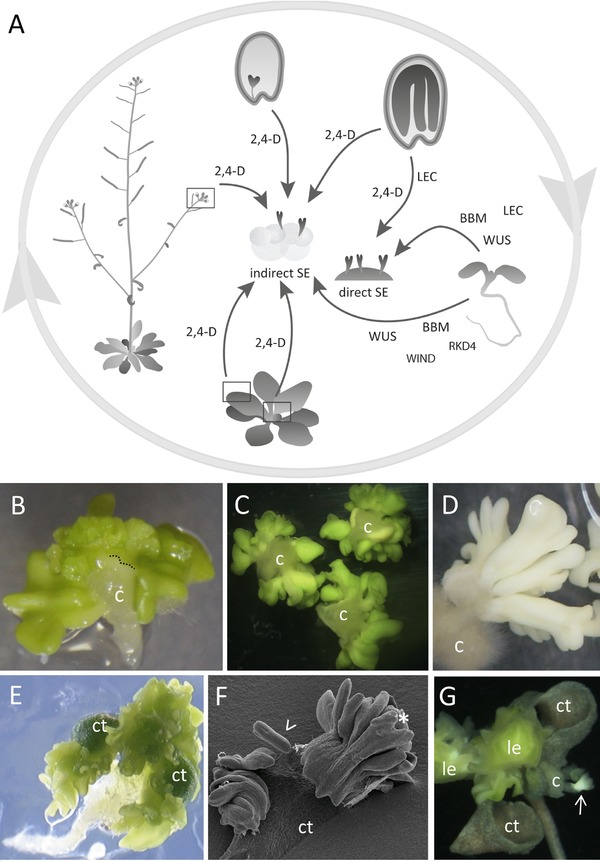Figure 1.

Somatic embryogenesis in arabidopsis. (A) Schematic overview of somatic embryogenesis (SE) systems in arabidopsis. SE can be induced from a range of tissues throughout the arabidopsis life cycle, and proceeds either directly or indirectly via a callus phase. SE can be induced using the synthetic auxin 2,4‐D or by overexpression of specific transcription factors, including BABY BOOM (BBM), LEAFY COTYLEDON (LEC), WUSCHEL (WUS), RWP‐RK DOMAIN‐CONTAINING 4 (RKD4) and WOUND INDUCED DEDIFFERENTIATION 1 (WIND1). (B)−(F) SE from different arabidopsis explants. (B) Direct SE from immature zygotic embryos treated with 2,4‐D on solid medium. Embryos develop from the edge of the original explant (dotted line), while the underlying tissue forms callus. (C) Indirect SE from immature zygotic embryos treated with 2,4‐D in liquid medium. (D) Secondary SE. Callus from primary somatic embryos cultured in liquid medium produces secondary somatic embryos after removal of 2,4‐D (Su et al., 2009). (E) 35S:BBM induces direct SE on the cotyledons and shoot meristem of germinated seedlings. (F) Scanning electron micrograph showing somatic embryo development on a 35S:BBM cotyledon. The embryos develop directly from the explant (>), are bipolar and undergo direct secondary embryogenesis (*). (G) Indirect SE on a 35S:BBM‐GR seedling. Embryos (arrow) develop from callus produced on the cotyledons. c, callus; ct, cotyledon; le, leaf
